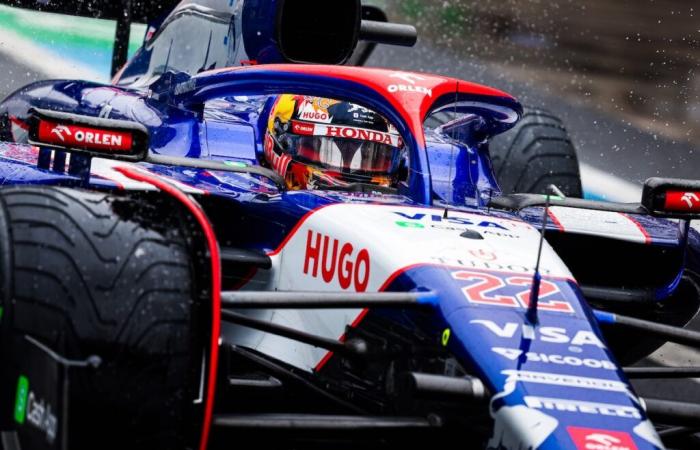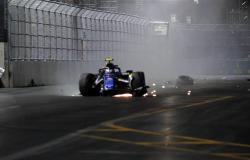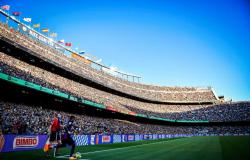After two weeks of well-deserved break, Formula 1 will attack its last triple-header of the 2024 championship with the Las Vegas Grand Prix as entry. A year after the return of the discipline to the Sin City, on this new 6.2 kilometer circuit, the ten teams return to Nevada with better knowledge of the specificities of this track. And like last year, drivers and teams will have to face major challenges and crucial choices regarding the settings of their mounts.
Beyond the rhinestones and glitter, the Las Vegas Grand Prix is also a real headache for engineers and drivers. The circuit is a mixture of (very) long straights, very slow corners and therefore, re-acceleration zones. Not to mention the autumnal, not to say winter, temperatures in the City of Angels which make heating tires very difficult, on urban tarmac and therefore not rubberized.
“It's an unusual circuit, very long for a street circuit, with mainly slow corners, so the car settings are a compromise between having enough downforce to help with braking at the end of the straight and having good traction when exiting a corner, while not having too much drag which affects your top speed, explained Yuki Tsunoda. It gets very cold at night, so one of the main challenges is keeping the brakes and tires in the correct operating window during a long race stint and during a fast qualifying lap. »
Las Vegas, an aerodynamic puzzle
Finding a good compromise between cornering support and top speed in a straight line seems mission impossible for the teams, who are often forced to make a choice between the two solutions. Some would be tempted by the second option in the race, in order to favor overtaking and defending track position. However, a lack of downforce could result in a lack of grip, which is already weak on this urban circuit, in addition to having difficulties in traction, which would negate the interest of riding at low downforce to promote top speed.
“There is no shortage of challenges for pilots and engineers, recognizes Jody Egginton, technical director of Racing Bulls. As the circuit is temporary, grip levels are generally low and although there is some change during the event, grip remains scarce, which is one of the challenges drivers face at this venue. The track layout pushes teams to remove downforce, aiming for high efficiency, meaning that looking for slipstream can be part of overtaking, while the section from Turn 6 to Turn 9 offers enough space for drivers to overtake, just like turn 17, if the driver has enough braking confidence. »
As for Racing Bulls, the objective is to return to the points zone in this Las Vegas Grand Prix. The Italian team lost a position in the Manufacturers' championship following Alpine's incredible double podium in São Paulo, and now finds itself in 8th place. “ Following recent events, we hope to be at the heart of the mid-pack battle, and to fight in what will be an intensive end to the season,” says Jody Egginton. Racing Bulls is only five points behind A arrowed in this fight for 6th place Manufacturers against Alpine and Haas before the last three meetings of the 2024 season.
READ ALSO > Sauber with a “fiery” livery in Las Vegas






